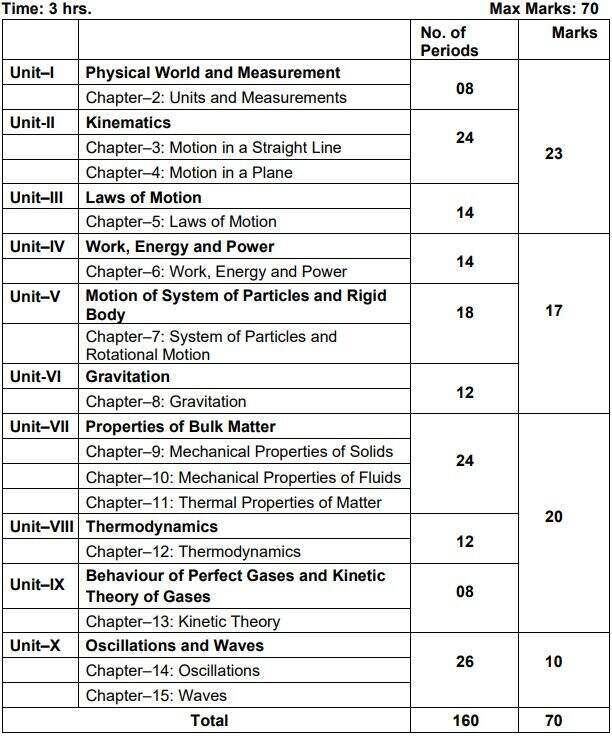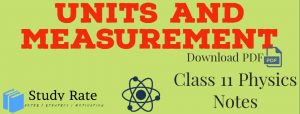Class 11 Physics Case Study Questions are available here. You can read these Case Study questions by chapter for your final physics exam. Subject matter specialists and seasoned teachers created these quizzes. You can verify the right response to each question by referring to the answer key, which is also provided. To achieve high marks on your Board exams, practice these questions.
Join our Telegram Channel, there you will get various e-books for CBSE 2024 Boards exams for Class 9th, 10th, 11th, and 12th.
We are providing Case Study questions for Class 11 Physics based on the Latest syllabus. There is a total of 14 chapters included in the CBSE Class 11 physics exams. Students can practice these questions for concept clarity and score better marks in their exams.
Class 11th PHYSICS: Chapterwise Case Study Question & Solution
Case study questions play a crucial role in the Class 11 Physics curriculum. They are designed to assess your understanding of various concepts and principles in real-life scenarios. These questions help you apply theoretical knowledge to practical situations, enhancing your problem-solving skills.
Case Study-Based Questions for Class 11 Physics
- Case Study Based Questions on Class 11 Physics Chapter 2 Units and Measurements
- Case Study Based Questions on Class 11 Physics Chapter 3 Motion in a Straight Line
- Case Study Based Questions on Class 11 Physics Chapter 4 Motion in a Plane
- Case Study Based Questions on Class 11 Physics Chapter 5 Laws of Motion
- Case Study Based Questions on Class 11 Physics Chapter 6 Work, Energy, and Power
- Case Study Based Questions on Class 11 Physics Chapter 7 System of Particles and Rotational Motion
- Case Study Based Questions on Class 11 Physics Chapter 8 Gravitation
- Case Study Based Questions on Class 11 Physics Chapter 9 Mechanical Properties of Solids
- Case Study Based Questions on Class 11 Physics Chapter 10 Mechanical Properties of Fluids
- Case Study Based Questions on Class 11 Physics Chapter 11 Thermal Properties of Matter
- Case Study Based Questions on Class 11 Physics Chapter 12 Thermodynamics
- Case Study Based Questions on Class 11 Physics Chapter 13 Kinetic Theory
- Case Study Based Questions on Class 11 Physics Chapter 14 Waves
- Case Study Based Questions on Class 11 Physics Chapter 15 Oscillations
Class 11 Physics MCQ Questions
Before the exams, students in class 11 should review crucial Physics Case Study issues. They will gain a better understanding of the kinds of Case Study questions that may be offered in Physics exams for Grade 11. These questions were created by our highly qualified faculty for standard 11 Physics based on the questions that appeared most frequently in last year’s exams. The solutions have been written in a way that will make them simple to grasp and will aid students in grade 11 in understanding the topics.
Class 11 Books for Boards



Class 11 Physics Syllabus 2024

Unit I: Physical World and Measurement 08 Periods
Chapter–2: Units and Measurements
Need for measurement: Units of measurement; systems of units; SI units, fundamental and derived units. significant figures. Dimensions of physical quantities, dimensional analysis and its applications.
Unit II: Kinematics 24 Periods
Chapter–3: Motion in a Straight Line
The frame of reference, Motion in a straight line, Elementary concepts of differentiation and integration for describing motion, uniform and non-uniform motion, and instantaneous velocity, uniformly accelerated motion, velocity-time and position-time graphs. Relations for uniformly accelerated motion (graphical treatment).
Chapter–4: Motion in a Plane
Scalar and vector quantities; position and displacement vectors, general vectors and their notations; equality of vectors, multiplication of vectors by a real number; addition and subtraction of vectors, Unit vector; resolution of a vector in a plane, rectangular components, Scalar and Vector product of vectors. Motion in a plane, cases of uniform velocity and uniform acceleration projectile motion, uniform circular motion.
Unit III: Laws of Motion 14 Periods
Chapter–5: Laws of Motion
Intuitive concept of force, Inertia, Newton’s first law of motion; momentum and Newton’s second law of motion; impulse; Newton’s third law of motion. Law of conservation of linear momentum and its applications. Equilibrium of concurrent forces, Static and kinetic friction, laws of friction, rolling friction, lubrication.
Dynamics of uniform circular motion: Centripetal force, examples of circular motion (vehicle on a level circular road, vehicle on a banked road).
Unit IV: Work, Energy and Power 14 Periods
Chapter–6: Work, Energy and Power
Work done by a constant force and a variable force; kinetic energy, workenergy theorem, power. Notion of potential energy, potential energy of a spring, conservative forces: non- conservative forces, motion in a vertical circle; elastic and inelastic collisions in one and two dimensions.
Unit V: Motion of System of Particles and Rigid Body 18 Periods
Chapter–7: System of Particles and Rotational Motion
Centre of mass of a two-particle system, momentum conservation and Centre of mass motion. Centre of mass of a rigid body; centre of mass of a uniform rod. Moment of a force, torque, angular momentum, law of conservation of angular momentum and its applications. Equilibrium of rigid bodies, rigid body rotation and equations of rotational motion, comparison of linear and rotational motions. Moment of inertia, radius of gyration, values of moments of inertia for simple geometrical objects (no derivation).
Unit VI: Gravitation 12 Periods
Chapter–8: Gravitation
Kepler’s laws of planetary motion, universal law of gravitation. Acceleration due to gravity and its variation with altitude and depth. Gravitational potential energy and gravitational potential, escape velocity, orbital velocity of a satellite.
Unit VII: Properties of Bulk Matter 24 Periods
Chapter–9: Mechanical Properties of Solids
Elasticity, Stress-strain relationship, Hooke’s law, Young’s modulus, bulk modulus, shear modulus of rigidity (qualitative idea only), Poisson’s ratio; elastic energy.
Chapter–10: Mechanical Properties of Fluids
Pressure due to a fluid column; Pascal’s law and its applications (hydraulic lift and hydraulic brakes), effect of gravity on fluid pressure. Viscosity, Stokes’ law, terminal velocity, streamline and turbulent flow, critical velocity, Bernoulli’s theorem and its simple applications. Surface energy and surface tension, angle of contact, excess of pressure across a curved surface, application of surface tension ideas to drops, bubbles and capillary rise.
Chapter–11: Thermal Properties of Matter
Heat, temperature, thermal expansion; thermal expansion of solids, liquids and gases, anomalous expansion of water; specific heat capacity; Cp, Cv – calorimetry; change of state – latent heat capacity. Heat transfer-conduction, convection and radiation, thermal conductivity, qualitative ideas of Blackbody radiation, Wein’s displacement Law, Stefan’s law .
Unit VIII: Thermodynamics 12 Periods
Chapter–12: Thermodynamics
Thermal equilibrium and definition of temperature zeroth law of thermodynamics, heat, work and internal energy. First law of thermodynamics, Second law of thermodynamics: gaseous state of matter, change of condition of gaseous state -isothermal, adiabatic, reversible, irreversible, and cyclic processes.
Unit IX: Behavior of Perfect Gases and Kinetic Theory of Gases 08 Periods
Chapter–13: Kinetic Theory
Equation of state of a perfect gas, work done in compressing a gas. Kinetic theory of gases – assumptions, concept of pressure. Kinetic interpretation of temperature; rms speed of gas molecules; degrees of freedom, law of equi-partition of energy (statement only) and application to specific heat capacities of gases; concept of mean free path, Avogadro’s number.
Unit X: Oscillations and Waves 26 Periods
Chapter–14: Oscillations
Periodic motion – time period, frequency, displacement as a function of time, periodic functions and their application. Simple harmonic motion (S.H.M) and its equations of motion; phase; oscillations of a loaded spring- restoring force and force constant; energy in S.H.M. Kinetic and potential energies; simple pendulum derivation of expression for its time period.
Chapter–15: Waves
Wave motion: Transverse and longitudinal waves, speed of traveling wave, displacement relation for a progressive wave, principle of superposition of waves, reflection of waves, standing waves in strings and organ pipes, fundamental mode and harmonics, Beats.
FAQs about Class 11 Physics Case Studies
What is the best website for a case study of Physics Class 11?
studyrate.in is the best website for Class 11 Physics Case Study Questions for Board Exams. Here you can find various types of Study Materials, Ebooks, Notes, and much more free of cost.
How do you write a case study question for Class 11?
The CBSE will ask two Case Study Questions in the CBSE Class 11th Maths Question Paper. Question numbers 15 and 16 will be case-based questions where 5 MCQs will be asked based on a paragraph.
Are the case study questions based on the latest syllabus?
Yes, the case study questions are curated to align with the latest Class 11 Physics syllabus.




